Elves, Sprites & Blue Jets: Earth's Weirdest Lightning
Strange and mysterious
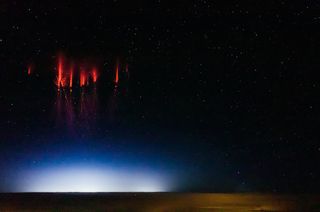
Lightning may flash on Earth about 100 times per second, but much remains a mystery about it. Scientists have discovered many strange forms of lightning over the years — everything from fiery orbs to jellyfish-shaped bursts of light. Here, LiveScience looks at some of the weirdest forms of lightning and the mysteries that still surround them.
Ball lightning
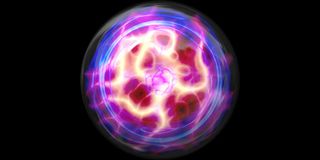
Ball lightning comes in the form of fiery orbs ranging in size from a golf ball to a very large beach ball (1 to 100 centimeters). These glowing spheres can be white, yellow, red, orange, purple or green, and can live for seconds or even minutes.
Over the centuries, there have been thousands of reported sightings of ball lightning, for example, floating into people's homes, but its rare and unpredictable nature has greatly limited scientific understanding of it. However, scientists have recreated ball lightning or something very much like it in the lab, results that suggested ball lighting was mostly the result of lightning striking the ground, vaporizing mineral grains in the soil. A video recorded by accident of ball lightning in China supports this idea.
Dark lightning
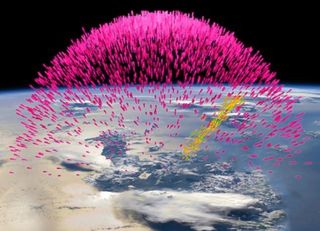
More than a decade ago, scientists unexpectedly discovered thunderstorms could generate brief but powerful bursts of gamma rays, the highest-energy form of light. These so-called terrestrial gamma-ray flashes are so bright that they are able to blind sensors on satellites many hundreds of miles away, and can actually create antimatter (particles that have properties opposite normal particles).
Now researchers suggest the flashes are caused by an extreme form of lightning called "dark lightning, " since it generates very little visible light. Normal lightning involves slow electrons — in contrast, dark lightning involves high-energy electrons. These electrons crash into air molecules, producing gamma rays. These gamma rays then generate electrons and their antimatter counterparts, known as positrons. These high-energy particles then collide into still more air molecules, generating more gamma rays.
Positive lightning
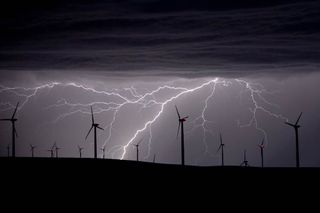
Lightning begins when a channel of electricity called a leader travels from one charged area to another — say, from a cloud to the ground, or from one layer within a cloud to another. This spurs a return stroke with the reverse electrical charge to zip in the opposite direction.
Most cloud-to-ground lightning is "negative lightning," where the initial leaders are negatively charged. However, the electrical fields involved with positive lightning are typically much stronger than with negative lightning, making them far more lethal and damaging than negative lightning.
Less than 5 percent of all cloud-to-ground lightning is positive lightning. However, the most common form of lightning is not cloud-to-ground, but "intra-cloud" lightning that arcs within thunderclouds, and most intracloud lightning is positive.
Sprites

Sprites are more than just mythical creatures — they are a mysterious form of lightning that dances near the edge of space. They are reddish bursts of electricity at altitudes of about 50 miles (80 kilometers) that last less than a second but are bright enough to see in daylight. These enigmas are often shaped like jellyfish, starting as balls of light that rapidly stream downward, but can also look like crowns or carrots. Scientists recently developed 3D images of sprites that could shed light on their origins and their influence on planetary climate.
Elves
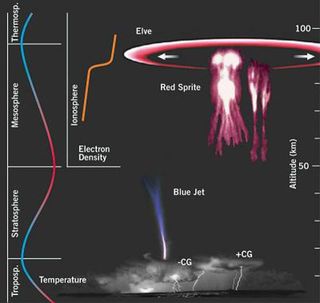
Like sprites, elves are reddish, ultra-fast bursts of electricity bright enough to see during the daytime high in the Earth's atmosphere. But elves are ring-shaped halos that can spread to more than 185 miles (300 kilometers) wide. Scientists first captured images of elves and sprites dancing above thunderstorms in the late '80s and early '90s. The leading culprit behind elves and sprites is positive lightning.
Blue jets

Blue jets are cones of blue light brighter than sprites that spray upward from the tops of thunderclouds up to an altitude of about 25 miles (40 kilometers) at speeds of about 22,370 mph (36,000 km/h). They most frequently happen early in thunderstorms, and seem to be linked with strong hail.
Blue starters

Blue starters resemble blue jets, but are much shorter, protruding upward from cloud tops about 10 miles (17 kilometers) to a maximum of about 16 miles (25.5 km) in altitude. Blue starters are thought to be closely related to blue jets — they may even be incomplete blue jets.
Gigantic jets
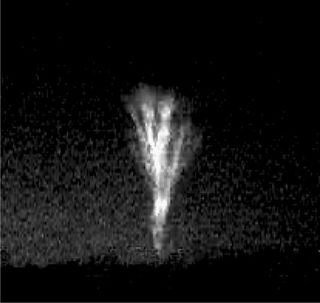
Huge bursts of lightning known as gigantic jets may be the tallest kind of lightning in the world. More than 50 miles (80 kilometers) above Earth's surface, extreme ultraviolet radiation from the sun reacts with air molecules to produce highly charged particles in a region near the edge of space known as the ionosphere. In 2001, scientists discovered gigantic jets of lightning arcing up from clouds in the lowest portion of the atmosphere, the troposphere, to the ionosphere. Researchers have since found they can leap up 50 to 56 miles (80 to 90 km). The bottoms of gigantic jets appear similar to blue jets, while the tops resemble sprites.
Sign up for the Live Science daily newsletter now
Get the world’s most fascinating discoveries delivered straight to your inbox.













